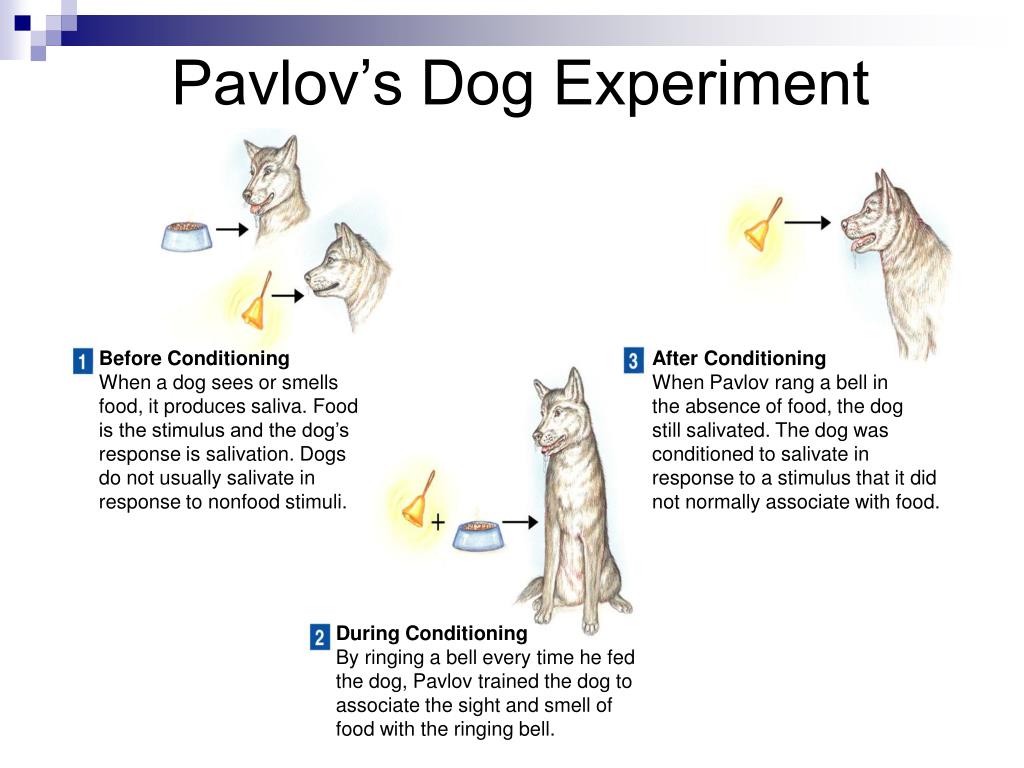

Again, in Pavlov's example, sounds were used as a CS, played before presenting the food (i.e., the UCS). When this happens, the response is referred to as the conditioned response (CR). When a conditioned stimulus (CS) is paired with the UCS, the CS will eventually elicit the UCR. In Pavlov's case, food (the UCS) led to a dog salivating (the UCR).

The connection between the UCS and the UCR is innate and thus is not learned. The unconditioned stimulus (UCS) leads to the unconditioned response (UCR). There are four key terms: (a) unconditioned stimulus, (b) unconditioned response, (c) conditioned stimulus, and (d) conditioned response. Classical conditioning focuses the process of learning by which new behaviors are acquired via repeated pairings with unconditioned stimuli and responses. Ivan Pavlov is credited with the classical conditioning paradigm. Avny, in Encyclopedia of Adolescence, 2011 Classical conditioning Watson and Rayner showed that phobias can be learnt through classical conditioning in the “ little Albert” experiment.M.A. Pavlov showed that classical conditioning leads to learning by association. The dogs had learnt to associate the bell with the food and the sound of the bell and salivation was triggered by the sound of the bell. The bell had become the conditioned stimulus and salivation had become the conditioned response. Then Pavlov sounded the bell ( neutral stimulus) before giving the food.Īfter a few pairings the dogs salivated when they heard the bell even when no food was given. The food was the unconditioned stimulus and salivation was an unconditioned (innate) response. Pavlov showed that dogs could be conditioned to salivate at the sound of a bell if that sound was repeatedly presented at the same time that they were given food.įirst the dogs were presented with the food, they salivated. The conditioned response (CR) is the response to the conditioned stimulus.Ĭlassical conditioning is learning through association and was first demonstrated by Ivan Pavlov. Once the neutral stimulus has become associated with the unconditioned stimulus, it becomes a conditioned stimulus (CS). The neutral stimulus (NS) is a new stimulus that does not produce a response. The response to this is called the unconditioned response (or UCR). The unconditioned stimulus (or UCS) is the object or event that originally produces the reflexive / natural response. Pavlov developed some rather unfriendly technical terms to describe this process. To summarize, classical conditioning (later developed by Watson, 1913) involves learning to associate an unconditioned stimulus that already brings about a particular response (i.e., a reflex) with a new (conditioned) stimulus, so that the new stimulus brings about the same response. Classical conditioning is "classical" in that it is the first systematic study of basic laws of learning / conditioning. Pavlov and his studies of classical conditioning have become famous since his early work between 1890-1930. If the time between the conditioned stimulus (bell) and unconditioned stimulus (food) is too great, then learning will not occur. He called this the law of temporal contiguity. Pavlov found that for associations to be made, the two stimuli had to be presented close together in time (such as a bell). (i.e., a stimulus-response connection that required no learning).

In behaviorist terms, food is an unconditioned stimulusĪnd salivation is an unconditioned response. This reflex is ‘hard-wired’ into the dog. For example, dogs don’t learn to salivate whenever they see food. Pavlov (1902) started from the idea that there are some things that a dog does not need to learn. Accordingly, he devoted the rest of his career to studying this type of learning. When Pavlov discovered that any object or event which the dogs learned to associate with food (such as the lab assistant) would trigger the same response, he realized that he had made an important scientific discovery. Pavlov predicted the dogs would salivate in response to the food placed in front of them, but he noticed that his dogs would begin to salivate whenever they heard the footsteps of his assistant who was bringing them the food. He inserted a small test tube into the cheek of each dog to measure saliva when the dogs were fed (with a powder made from meat). Ivan Petrovich Pavlov (1849–1936) was aĭuring the 1890s, Russian physiologist, Ivan Pavlov was researching salivation in dogs in response to being fed. Like many great scientific advances, Pavlovian conditioning (aka classical conditioning) was discovered accidentally.

Pavlov’s Dogs Study and Pavlovian Conditioning Explained


 0 kommentar(er)
0 kommentar(er)
